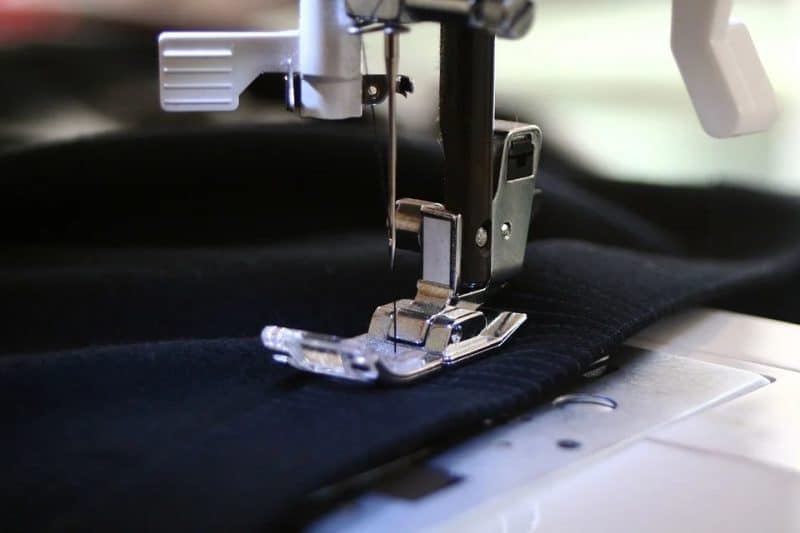Those interested in learning how to make a pillow with piping and a zipper only need three steps. You can choose to make a pillow with cording and an invisible zipper, but the technique below is a more straightforward way to add definition to your throw pillows. Don’t be intimated with the details because even those without any experience with sewing pillows can create an eye-catching throw pillow.
But why bother with piping? Adding this nifty detail creates more definition to your pillow. This guide will also teach you how to add a zipper for a more convenient closure style.

How To Make A Zippered Pillow With Piping
Step #1. Make the pillow
The first step is to construct your pillow according to the size you want. Since it will look best fluffy for a typical decorative pillow, you can cut your fabric according to the exact pillow dimensions. On the other hand, you can cut the fabric pieces an inch bigger than your pillow dimensions if you don’t want an overstuffed finish.
Compared to a fully closed pillow without a zipper, you want to cut the back piece of fabric to be an inch longer on one side for the zipper. Once you have the fabric pieces to construct your pillow, you want to serge their edges before putting the zipper in. Finally, lay the two fabric pieces where the smaller ones are right side down and their long sides aligned, and the right sides facing.
Step #2. Add a zipper
What size of the zipper should you use? You want a slightly shorter zipper than your finished pillow, then center it at the edge of the fabric. To guide yourself in stitching, mark a line from the zipper’s edge to the fabric’s edge at half an inch from the top edge on each side of the zipper.
You can sew by hand or use a machine along the line with a straight stitch and make basting stitches at the top between the two lines you made. Open the seam and iron it before pinning the zipper face down and sew its sides with a straight stitch. You can then rip the basting stitches with a seam ripper so that you can unzip the zipper underneath halfway.
Step #3. Place the piping
After you finished the zippered pillow, you can pin the piping around the edge of the pillow front with the piping facing right side down. Round the corners by clipping their edges and align the cords, so they meet before basting in place. Flip your pillow right side up and pin the front side to make it easier for you to see where you basted.
Sew the two sides together and trim your edges to finish your pillow. You can flip it inside out and check it for points that may fray. Add some fabric adhesive to these areas, and you’re done!
How To Make An Envelope Pillow With Piping
Perhaps you prefer a pillow with an envelope closure instead of a zipper for quicker removal. For this pillow type, it’s also easy to add piping to make the finish more professional-looking. Start by cutting your front piece and two back pieces on the fabric.
Step #1. Prepare the fabric pieces
Remember that the back pieces will become your envelope closure by overlapping them. Their dimensions have the same width as the pillow form, and their height will be ¾ of the pillow’s height. As for the front fabric piece, it should have the same dimensions as the pillow.
Step #2. Make the piping
What about the fabric for the piping? The width of the strips will be cording’s width plus seam allowance multiplied twice. The length, on the other hand, should be enough to go around the pillow.
Place the cording in the middle of a fabric strip and fold it in half before sewing down its full length. Attach it to the front pillow piece’s bottom panel and make a stitch two inches from the end of the piping. Sew around the curve and adjust the fabric as you go until you are close from the beginning.
Step #3. Construct the pillow
Let the cording ends meet to finish sewing, and you should be ready to make the envelope pillow itself. Pin the back pieces to the front piece and sew with half an inch of the seam allowance. Trim the corners and turn the pillow right side out to finish.
Why Add Piping To A Pillow?
As you have read, adding piping to zippered and envelope pillows are relatively straightforward. But why should you bother attaching this detail? The quick answer is this simple addition enhances definition and style to the finish.
Your decorative pillows will look more refined because of the added body from the cord covered in fabric. The process is quite simple anyway, and you can experiment with the colors and fabric designs to add. The key is to master how to let the cording ends meet smoothly.
Conclusion
Sewing a pillow is relatively easy, so why not add more details and improve it more? If you’re interested, you can quickly study how to make a pillow with piping and a zipper. The zipper makes cover replacement easy, and the piping enhances the pillow’s features, especially for decorative purposes.
The guide above teaches you how to make a zippered pillow and how to add piping afterward. You can sew with a machine or by hand to make straight stitches and baste stitches. And before you know it, you just made a zippered pillow with piping!
